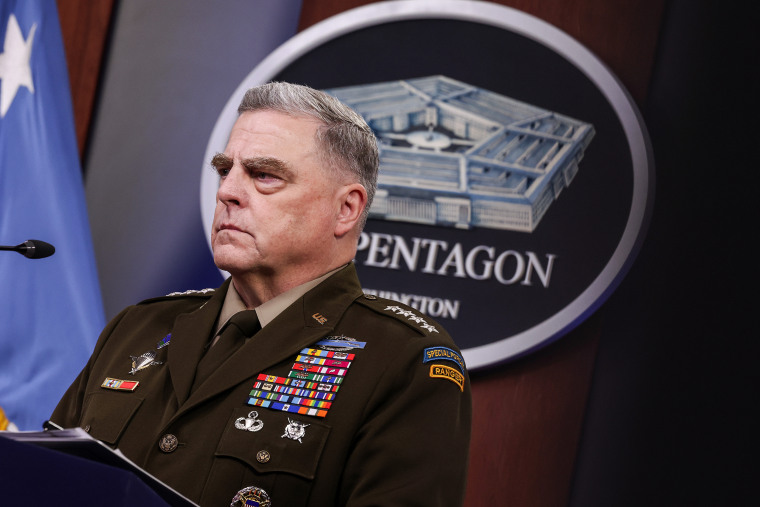In early June, in one of the first public hearings of the Jan. 6 committee, Republican Vice Chair Liz Cheney noted that it was then-Vice President Mike Pence who called for the military to defend the Capitol when it was under attack.
“Trump gave no order to deploy the National Guard that day, and made no effort to work with the Department of Justice to coordinate and deploy law enforcement assets,” the Wyoming congresswoman said in early June. “But Mike Pence did each of those things.”
This received some fresh attention as part of last night’s hearing. NBC News reported:
Gen. Mark Milley, chairman of the Joint Chiefs of Staff, didn’t hear from Trump about the riot; he spoke instead to Pence. The panel played audio from its interview with Milley, who said of Trump: “You know, you’re the commander in chief. You’ve got an assault going on in the Capitol of the United States of America. And there’s nothing? No call? Nothing? Zero?”
As part of the same testimony, the general said he had multiple conversations with the then-vice president. “He was very animated and he issued very explicit, very direct, unambiguous orders,” Milley said, referring to Pence.
The general added that Pence was “very firm” in telling then-Secretary of Defense Chris Miller, “Get the military down here, get the guard down here, put down this situation.”
Part of what made this extraordinary was the degree to which it casts Trump in an indefensible light: The then-president could’ve called the Joint Chiefs chairman and the Defense secretary, but he made a conscious decision not to. The Republican’s dereliction of duty couldn’t be more obvious.
But there’s another part of this that’s worth dwelling on: There’s a chain of command, and Pence wasn’t supposed to be a part of it. He took on a leadership role anyway, basically because Trump created a vacuum by picking up his television remote instead of picking up his phone.
Under normal circumstances, the Joint Chiefs chairman and the Defense secretary wouldn’t consider taking orders from a sitting vice president. But everyone involved in the governing process seemed to come to an implicit understanding as the Trump era neared its end: The office of the presidency was, for all intents and purposes, empty.
Yes, there was a person behind the desk in the Oval Office, but since he lacked the will, the wherewithal, and the interest to do the job, folks like Pence started giving orders — and the rules that are supposed to dictate our system of government were simply overlooked for a little while.
As conservative commentator Noah Rothman summarized, Trump “abdicated his duties as commander-in-chief of the armed forces, and that power was usurped out of necessity by the vice president.”
This isn’t intended as criticism of Pence, at least not entirely. Someone needed to give orders, so he did, and by all appearances, the then-vice president’s directives were sound and responsible.
But this appears to have been a rare instance in which there was a breakdown in our constitutional order because, at a moment of crisis, Trump didn’t want to exercise his duties and showed no interest in protecting his country.
In January 2018, as one of Trump’s government shutdowns got underway, presidential historian Jon Meacham said of the developments, “This is what government would look like without a president.”
More than four years later, it’s a quote that continues to resonate for a reason.

